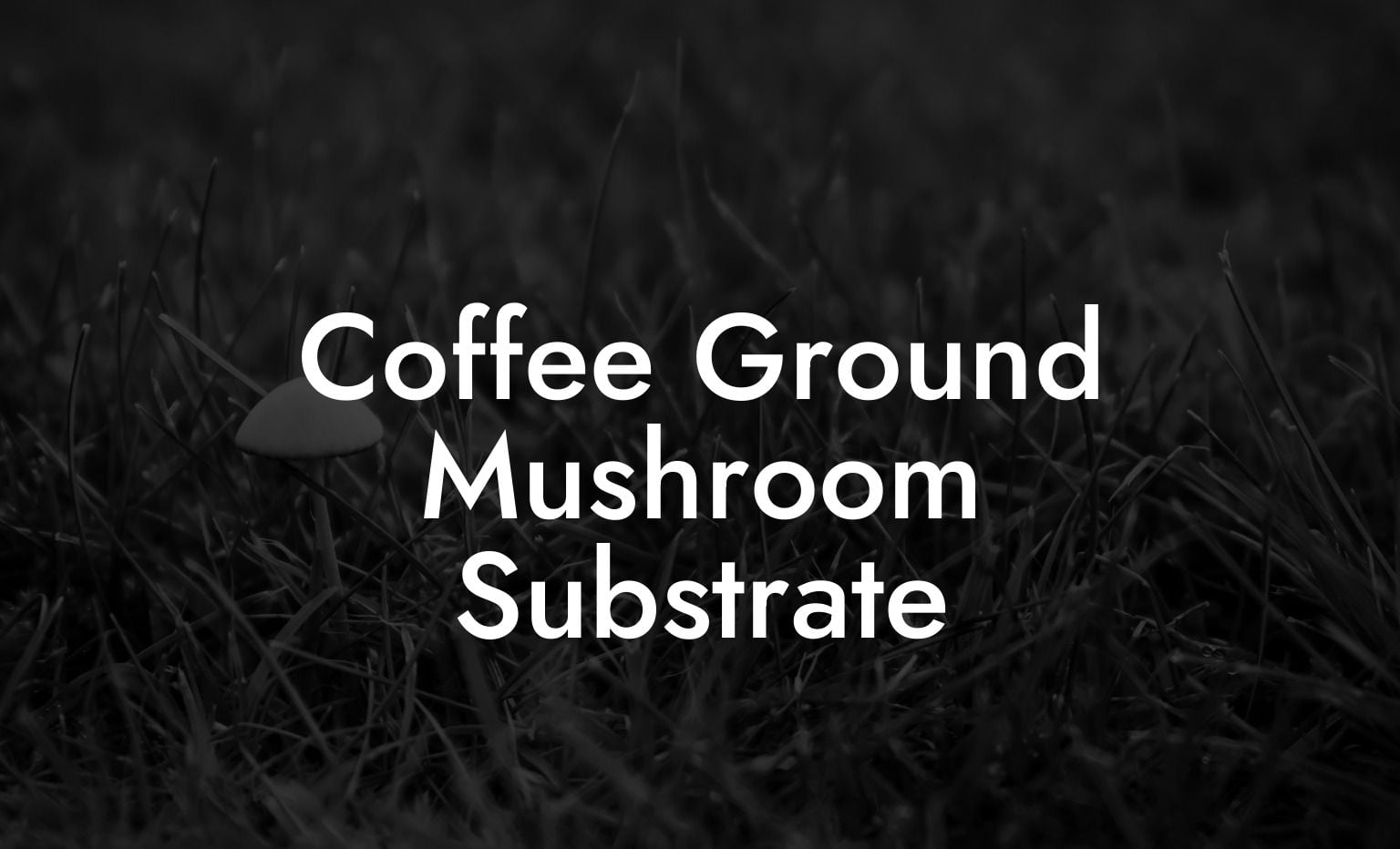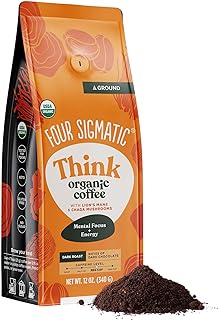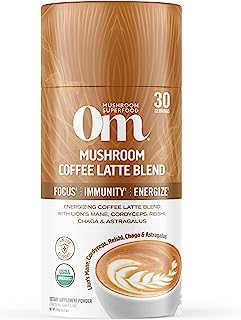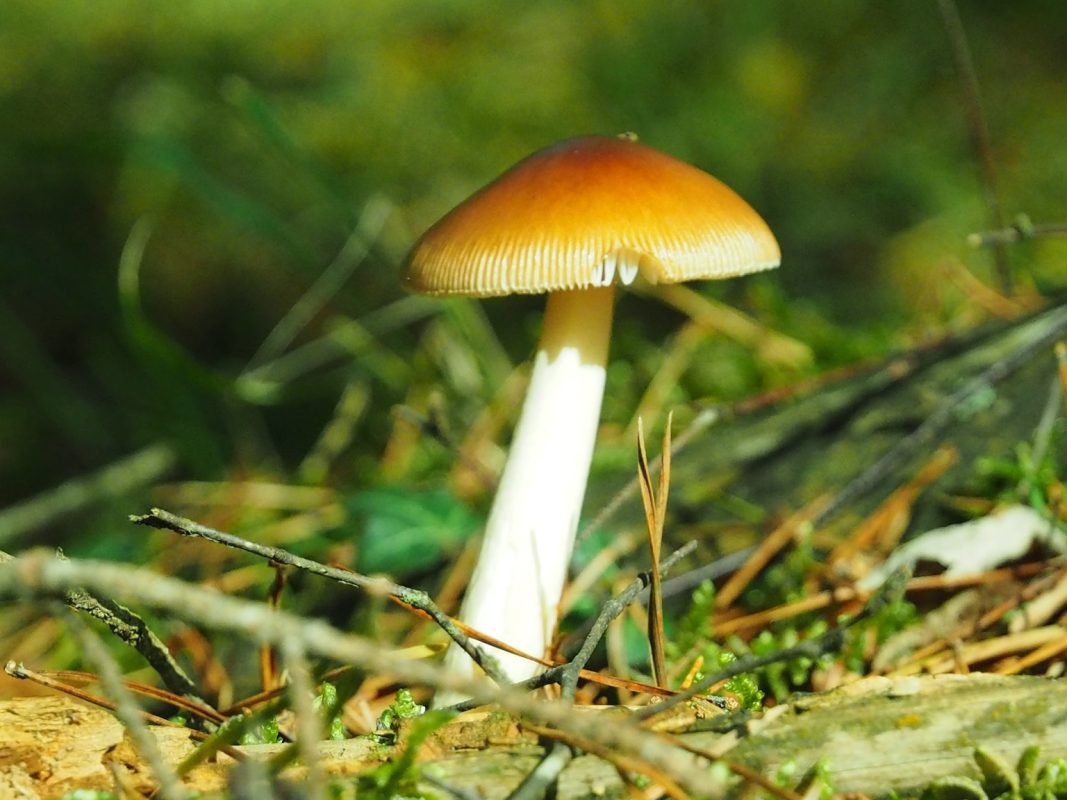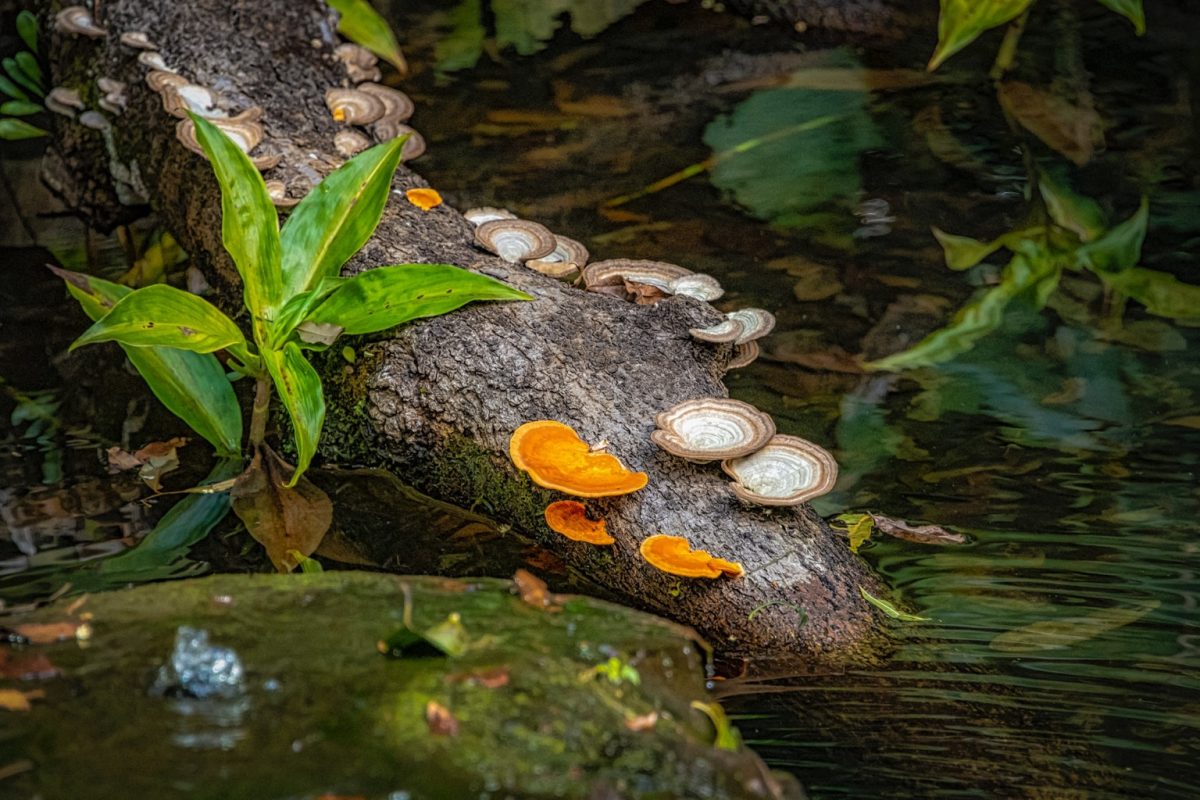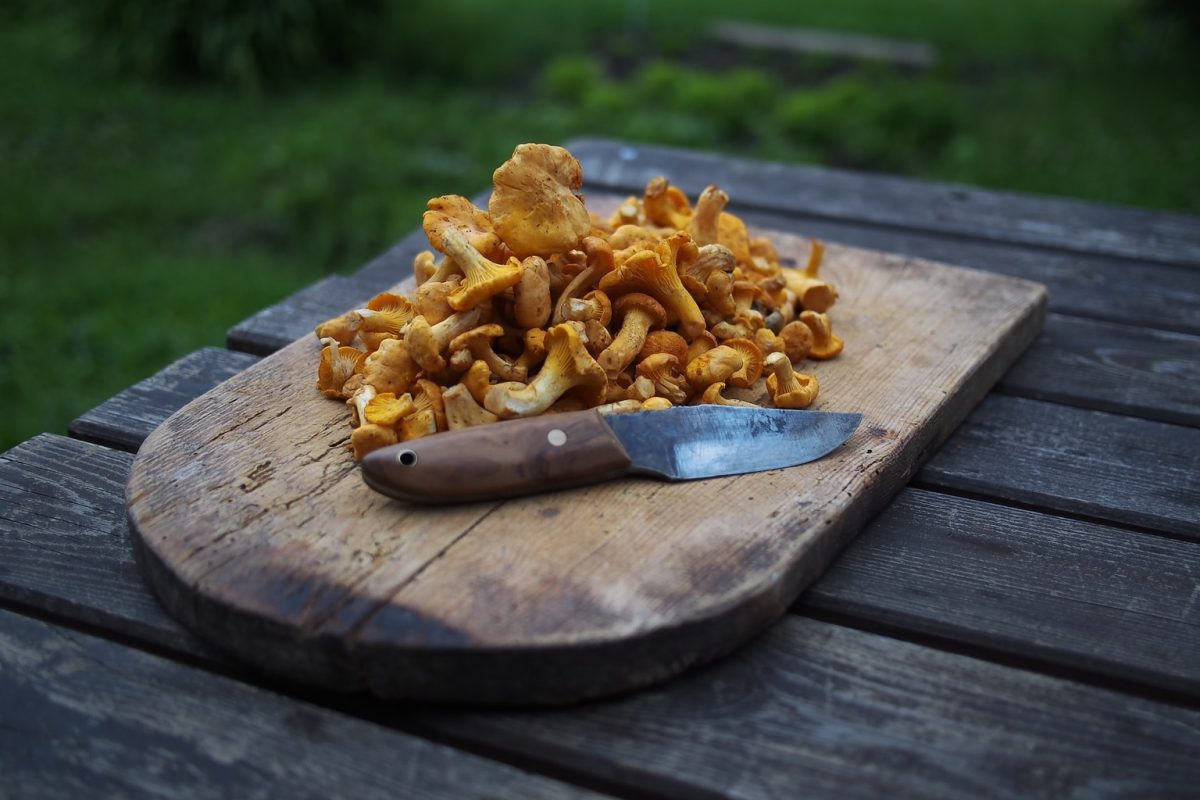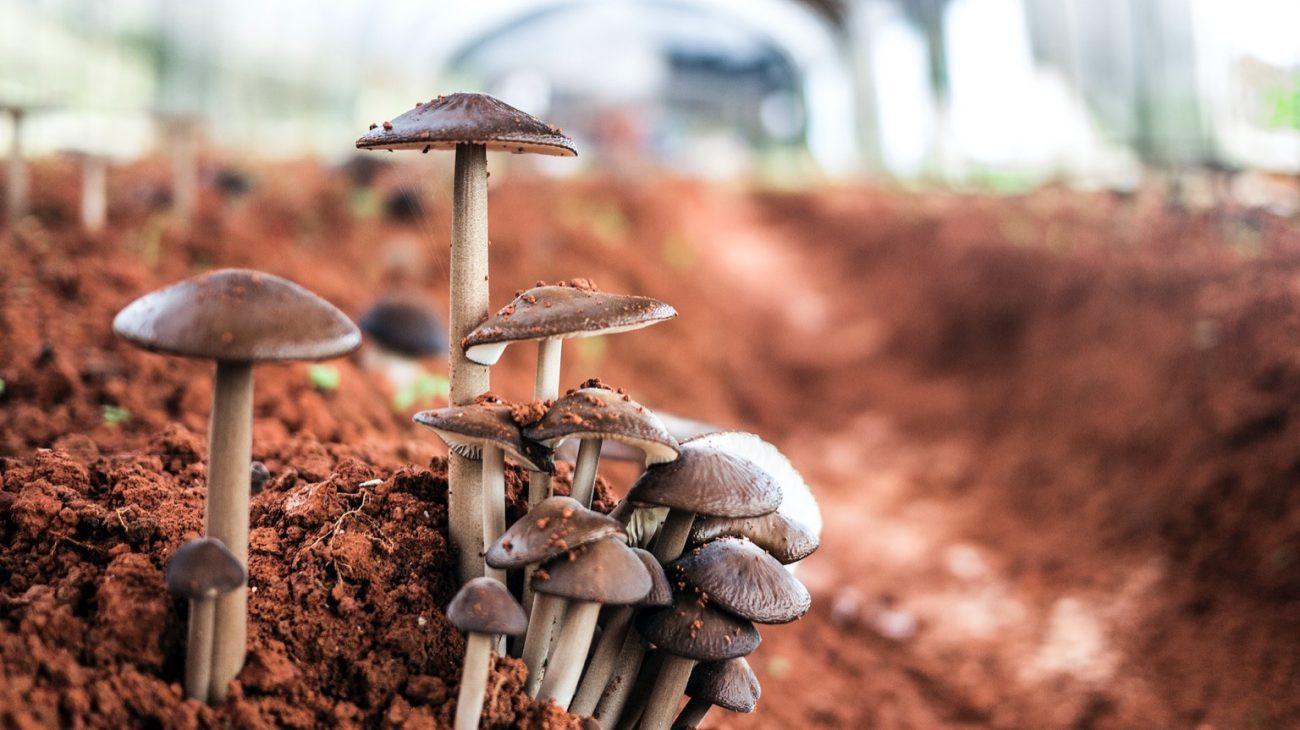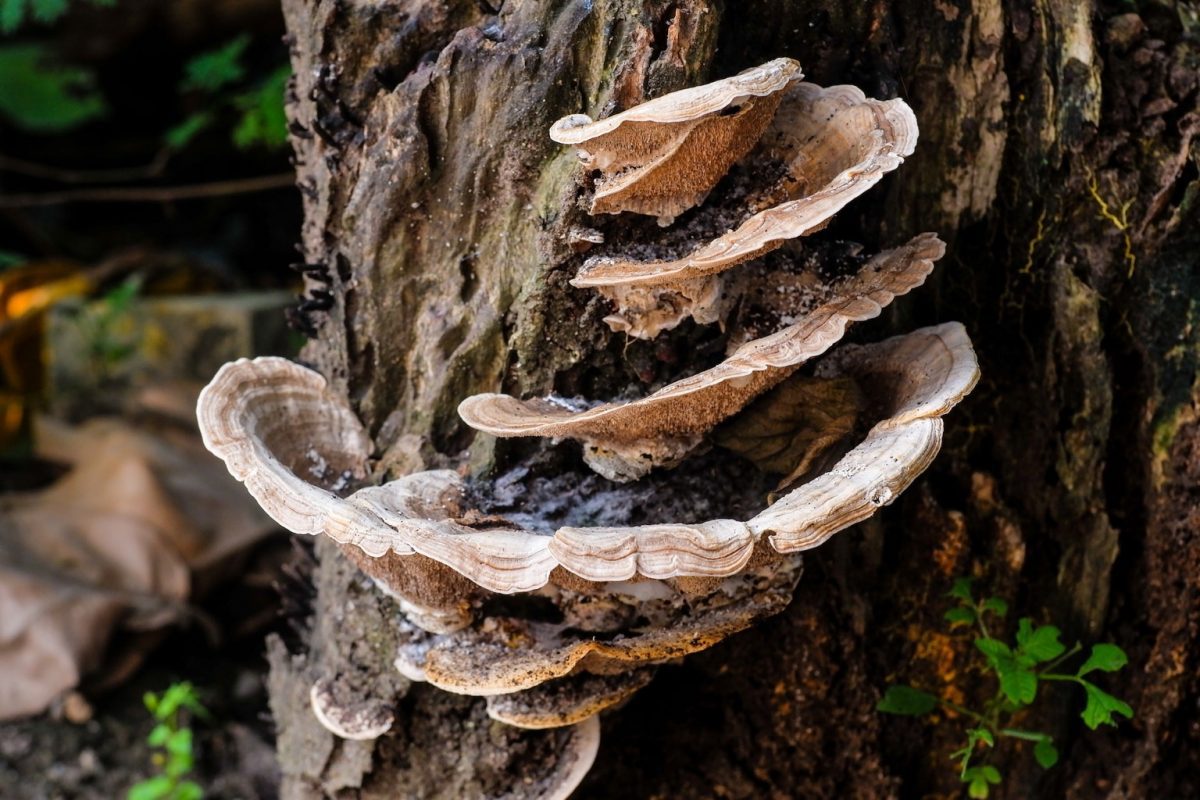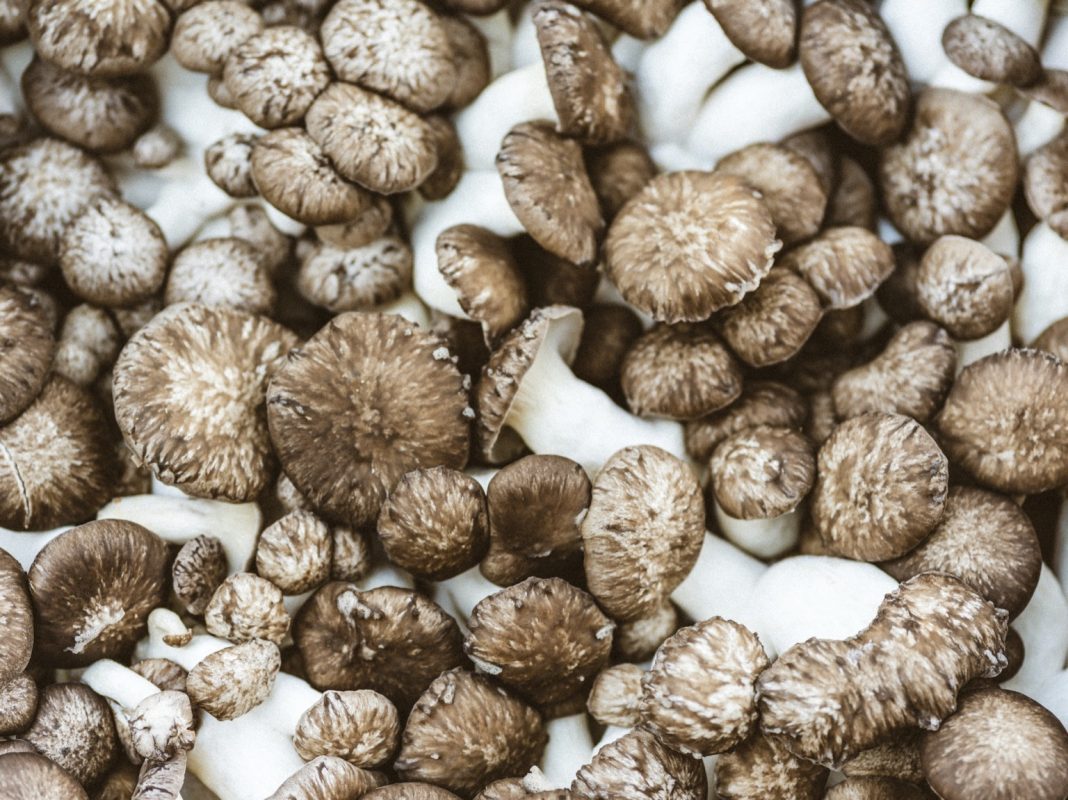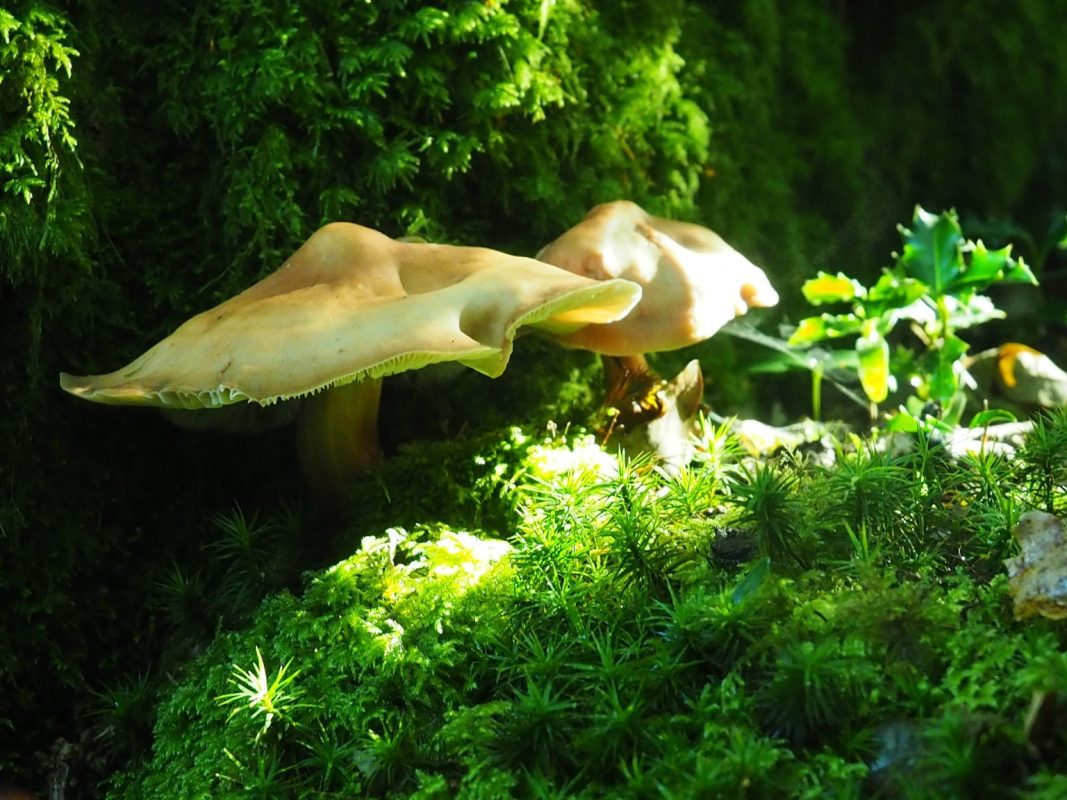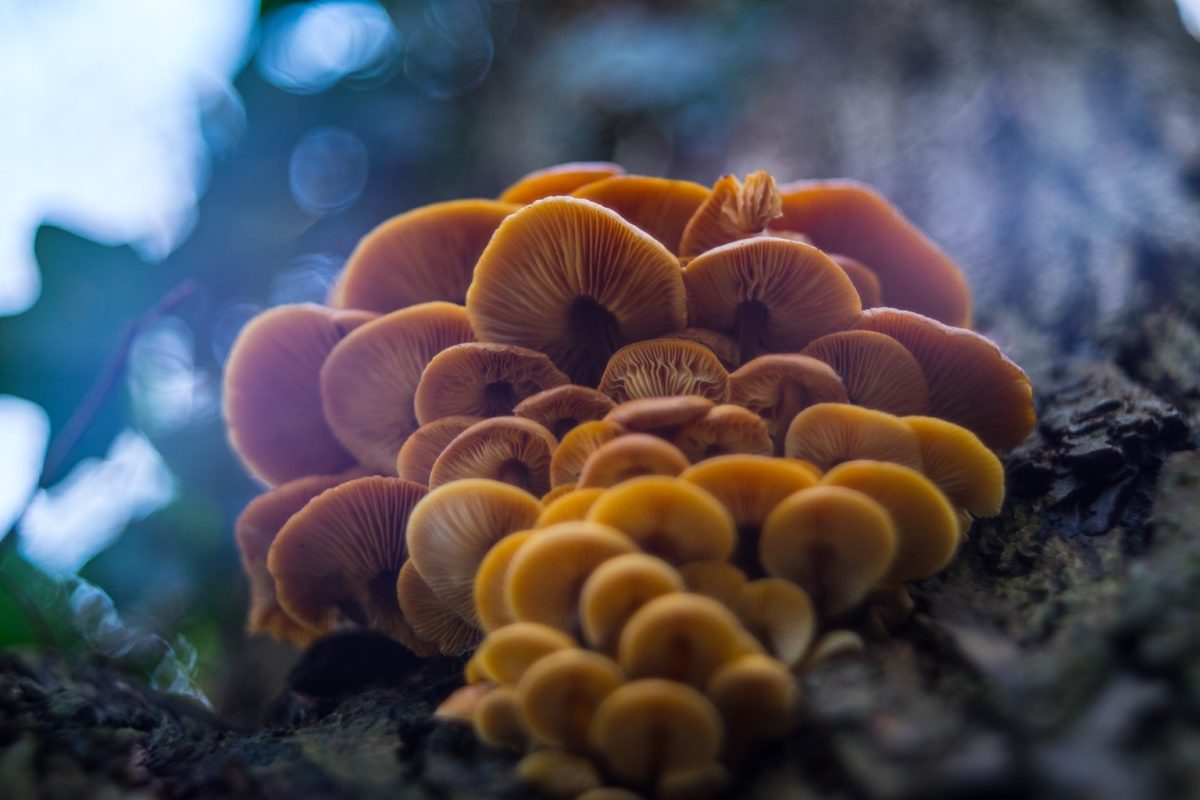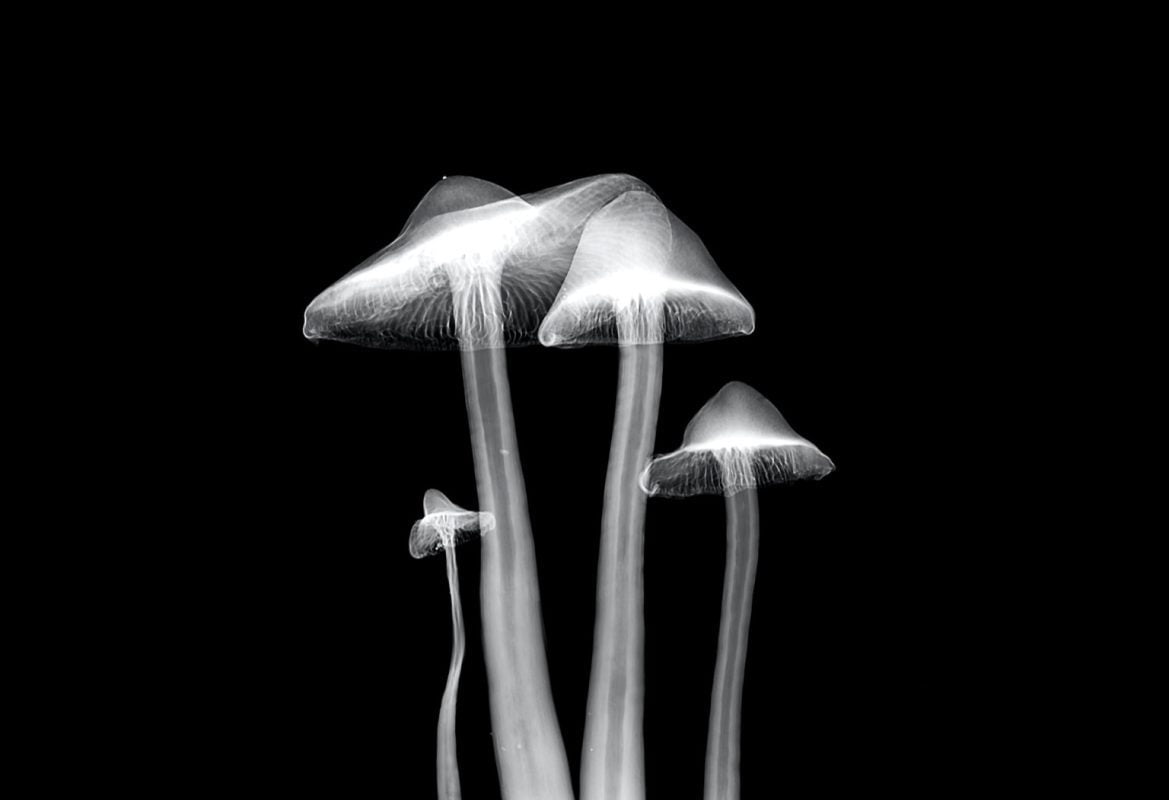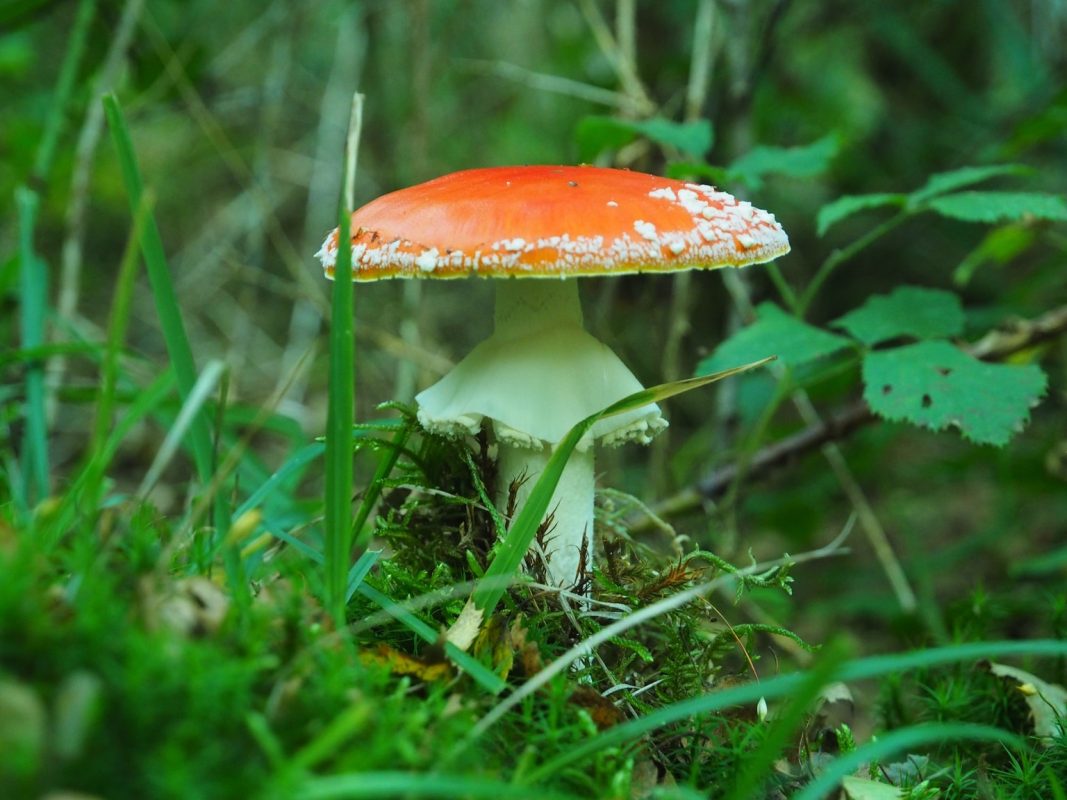Ever thought your daily coffee fix could morph into a green revolution right in your own home? Welcome to the world of Coffee Ground Mushroom Substrate, a vibe that blends your caffeine habit with the art of mushroom cultivation. Imagine repurposing those used coffee grounds from your morning brew into a thriving organic substrate that fuels the growth of delicious gourmet mushrooms. Whether you're a Gen-Z eco-warrior, a millennial on a sustainable kick, or simply a coffee lover with a green thumb, this guide is your ultimate passport into an innovative, fun, and humble-harvest journey that melds sustainability, creativity, and a dash of science.
Quick Links to Useful Sections
- What Is Coffee Ground Mushroom Substrate?
- Why Use Coffee Grounds? Exploring the Magic Behind the Brew
- The Science of Substrate: How Coffee Grounds Transform Into Mushroom Magic
- Understanding Mycelium and Its Needs
- The Role of Moisture and pH
- DIY Coffee Ground Substrate: A Step-By-Step Guide
- Step 1: Gather Your Materials
- Step 2: Prepare and Sterilize Your Substrate
- Step 3: Inoculate with Spawn
- Step 4: Incubation and Colonization
- Step 5: Initiate Fruiting Conditions
- Step 6: Harvest and Reuse
- Mushroom Varieties That Thrive on Coffee Ground Substrate
- Oyster Mushrooms
- Shiitake Mushrooms
- Button and Cremini Mushrooms
- Sustainable Benefits: Coffee Grounds, Mushrooms, and the Environment
- Waste Reduction and Upcycling
- Organic and Chemical-Free Growth
- Community and Local Impact
- Common Challenges and How to Overcome Them
- Contamination Concerns
- Moisture Control
- Pest Management
- Temperature and Light Fluctuations
- Creative DIY Projects and Experiments with Coffee Grounds
- Indoor Mushroom Gardens
- Community Workshops & Urban Farming Initiatives
- Mushroom Art and Culinary Experiments
- Resources and Community Support: Your Next Steps
- Integrative Case Studies: Real-Life Transformations with Coffee Ground Substrate
- Case Study 1: From Coffee Waste to Gourmet Oyster Mushrooms
- Case Study 2: Community Workshops Spark a Green Revolution
- Case Study 3: A Culinary Experiment Turned Business Venture
- Frequently Asked Questions About Coffee Ground Mushroom Substrate
- Your Journey into a Greener, Fungal Future
What Is Coffee Ground Mushroom Substrate?
Coffee ground mushroom substrate is exactly what it sounds like, a nutrient-rich medium created using spent coffee grounds, repurposed to cultivate mushrooms. At its core, it’s an eco-friendly, low-cost, and surprisingly effective base, brimming with the organic compounds that mushrooms crave for robust growth and flavor. The beauty of this method lies in its simplicity: recycling waste from your daily coffee ritual into a powerful growth substrate that not only nourishes fungi but also reduces waste.
This substrate is popular among urban gardeners, DIY enthusiasts, and eco-conscious mushroom cultivators who want to merge sustainability with homegrown food production. By transforming your post-coffee waste into an organic growth medium, you’re tapping into an innovative way to reduce landfill material while simultaneously nurturing a mini mushroom farm.
In a world where every little bit of waste reduction matters, coffee ground mushroom substrate provides a creative solution by turning what most people toss away into something resourceful, fulfilling, and downright cool. It's a win-win for both your indoor garden and the planet!
Why Use Coffee Grounds? Exploring the Magic Behind the Brew
You might be wondering: Why coffee grounds? The answer is steeped in both science and sustainability. Used coffee grounds are packed with essential nutrients such as nitrogen, which mushrooms need to grow healthy and strong. These organic compounds make them an irresistible feast for mycelium, the thread-like foundation from which mushrooms sprout.
Looking For The Best Mushroom Coffee? You'll Love These:
Beyond the nutritional perks, reusing coffee grounds is a superb example of upcycling in action. Rather than contributing to landfill mass, your coffee grounds get a second life as a dynamic substrate, boosting the eco-credentials of your gardening endeavors. This aligns perfectly with the ethos of Gen-Z and millennial sustainability practices: reduce, reuse, and recycle whenever possible.
Plus, coffee grounds naturally have a slightly acidic pH, which can be ideal for the cultivation of certain mushroom species. They help ward off some common contaminants while fostering an environment where the mycelium can flourish. So the next time you brew that cup, consider that its remnants might just be the secret ingredient to your next culinary delight.
The Science of Substrate: How Coffee Grounds Transform Into Mushroom Magic
At the intersection of waste reuse and fungal biochemistry lies the science of coffee ground mushroom substrates. When coffee grounds are mixed with other organic materials, a good combo might include straw, sawdust, or even manure, the resulting blend is rich in nutrients and perfect for spawning mycelium colonies.
Understanding Mycelium and Its Needs
Mycelium is the vegetative part of fungi, essentially the engine that powers mushroom growth. It’s comparable to the roots of a plant, network-like, spreading through the substrate as it digests and absorbs nutrients. The dense, nutrient-rich environment provided by coffee grounds jump-starts this process, encouraging rapid colonization.
The friendly bacteria present in used coffee grounds further aid in breaking down tougher components, smoothing the transition from substrate to fully developed mushrooms. This symbiotic dance between coffee compounds, microbial life, and fungal mycelium is what transforms a simple waste product into a flourishing ecosystem.
The Role of Moisture and pH
Moisture is everything in mushroom cultivation. Coffee grounds tend to retain a good amount of water, creating a damp, cozy habitat for mycelium to advance its reach. However, like all things in nature, balance is key, too much moisture, and you risk bacterial contamination; too little, and the mycelium dries out. Additionally, maintaining the right pH is critical. Coffee grounds, with their inherent acidity, can naturally deter unwanted pathogens while supporting the growth of particular mushroom species that thrive in slightly acidic environments.
Ensuring this balance through careful preparation and monitoring is essential for a productive mushroom cultivation cycle. It’s about harnessing nature’s rhythm and syncing your methods with the delicate requirements of mycelium.
DIY Coffee Ground Substrate: A Step-By-Step Guide
Ready to join the sustainable revolution and become your own mushroom maestro? Follow our step-by-step guide to creating your coffee ground mushroom substrate. Whether you're a seasoned DIYer or just curious about the science behind it, this guide will walk you through the process with a dash of humor and plenty of useful tips.
Step 1: Gather Your Materials
First things first, you’ll need spent coffee grounds (pro tip: they’re free from your daily cup or can be sourced from local coffee shops eager to reduce waste), a complementary organic material like straw or sawdust, and some water. Optionally, you might also have a container, gloves, and a spray bottle for added precision.
Other optional items include: a pH testing kit (to ensure your substrate isn’t too acidic or basic), sterilization tools such as a pressure cooker, and even a digital scale to measure the ratios precisely if you're into the nitty-gritty details.
Step 2: Prepare and Sterilize Your Substrate
Start by mixing your coffee grounds with your secondary substrate material. A common recommendation is to blend 60-70% coffee grounds with 30-40% straw or sawdust. This ratio creates a balanced blend that’s moist enough yet not overly dense.
Sterilization is key to prevent contamination. If you have a pressure cooker, steam the mixture for about 45 minutes to an hour. If not, you can pasteurize the mixture by exposing it to hot water (around 160°F or 70°C) for a designated period. This step reduces the risk of unwanted microbes invading your substrate.
Step 3: Inoculate with Spawn
Once your substrate cools to room temperature, it's time to introduce the star of the show: mushroom spawn. Depending on your chosen mushroom variety, be it oyster, shiitake, or button mushrooms, sprinkle the spawn evenly throughout your substrate and mix gently. The idea here is to distribute the spawn so that every inch of substrate is primed for growth.
During this phase, maintaining a clean environment is crucial. Think of it as a high-stakes party where only the best, most compatible guests (fungal spores) are invited.
Step 4: Incubation and Colonization
Place your inoculated substrate in a clean container or bag that allows for some air exchange without letting contaminants in. Store it in a warm, dark place (around 70°F or 21°C works best) for a period of one to two weeks. This is when the magic happens, the mycelium will begin to colonize the substrate, weaving an intricate network throughout the organic buffet.
During incubation, check occasionally to ensure optimal moisture levels. If the substrate starts to dry out, a light misting will help maintain the environment. This phase sets the stage for when you eventually move the substrate to the fruiting stage.
Step 5: Initiate Fruiting Conditions
Fruiting is triggered when the mycelium has fully colonized the substrate. Transfer your cultured substrate to a fruiting chamber or a suitable growing area with higher humidity and indirect light. Think of this as the “catwalk” for mushrooms, once the conditions are right, they'll start popping up like mini green superstars.
Maintain high humidity (around 85-95%) and ensure proper ventilation to encourage mushroom pinning and growth. Within days, you should see mushroom pins emerging, ready to embark on their journey to become a delicious harvest.
Step 6: Harvest and Reuse
When your mushrooms have reached the desired size, it’s harvesting time! Use a sharp knife to cut them at the base. And here’s a bonus tip: after your first harvest, some substrates can produce a second or even third flush of mushrooms. Simply maintain the moisture and conditions, and enjoy the renewable goodness of your sustainable setup.
This DIY process not only gives you a direct line to fresh, homegrown mushrooms but also contributes to reducing food and organic waste. Plus, it makes an ideal conversation starter for your next Zoom call or brunch with friends.
Mushroom Varieties That Thrive on Coffee Ground Substrate
Not all mushrooms are created equal, and selecting the right variety to grow on coffee ground substrate can elevate your cultivation game. Some mushrooms particularly thrive in this nutrient-dense medium. Let’s take a closer look at some popular choices:
Oyster Mushrooms
Often called the “hipsters” of the mushroom world, oyster mushrooms are easy to grow and have a fast colonization time. They’re known for their delicate, slightly sweet flavor and adapt well to coffee ground substrates. Their robust mycelium can rapidly break down organic material, making them a favorite among new and seasoned cultivators alike.
Shiitake Mushrooms
Shiitake mushrooms, beloved for their umami intensity, also perform well on a coffee ground mix, especially when combined with wood chips or sawdust. While they tend to have a slower colonization process compared to oyster mushrooms, the payoff is a deeper, richer flavor profile that elevates soups, stir-fries, and even artisan coffee blends.
Button and Cremini Mushrooms
The classic button and its more mature cousin, the cremini, can also be introduced to coffee ground substrates with excellent results. These varieties offer versatility in the kitchen and help bring a subtle flavor twist when grown in organic, repurposed coffee waste. Expect a firmer texture and a slightly earthier taste compared to those grown on conventional substrates.
Experimenting with different mushroom varieties not only enhances your culinary repertoire but also contributes to a broader understanding of how various species interact with coffee grounds. Embrace the trial-and-error process as part of the learning curve on your journey to becoming a mushroom cultivator extraordinaire.
Sustainable Benefits: Coffee Grounds, Mushrooms, and the Environment
The environmental impact of using coffee ground mushroom substrate goes far beyond producing gourmet fungi. By embracing this eco-friendly method, you’re actively contributing to waste reduction and sustainable agriculture practices. Here’s how:
Waste Reduction and Upcycling
Every cup of coffee you consume creates waste, but instead of letting those grounds end up in landfills, you’re offering them a second life. Upcycling coffee grounds into mushroom substrate is not only a creative solution to waste management but also a practical approach to reduce your environmental footprint.
Embracing upcycling practices gives you bragging rights in the sustainability community and inspires others to rethink how everyday waste can be reintegrated into a circular economy, one where every resource counts.
Organic and Chemical-Free Growth
When you use coffee grounds and other natural organic materials, you’re cultivating mushrooms without the need for harsh chemicals or synthetic fertilizers. This organic approach ensures that your mushrooms are pure, healthy, and free of chemical residues, making them a cleaner and safer choice for home consumption.
Moreover, avoiding synthetic additives helps maintain soil health and biodiversity, contributing to a more balanced ecosystem. It's all about working with nature, not against it, an idea that resonates well with those committed to sustainable living.
Community and Local Impact
Many urban communities and local coffee shops have jumped on board with coffee ground recycling initiatives. By collaborating with these local entities, you can source your beans sustainably and even contribute to community programs focused on urban farming and sustainability education.
This collaborative spirit extends beyond your own home, forging connections with fellow enthusiasts and supporting local economies. After all, what’s cooler than turning a cup of joe into a positive force for local change?
Common Challenges and How to Overcome Them
Like any DIY project, growing mushrooms on coffee ground substrate comes with its own set of challenges. However, forewarned is forearmed, here are some common obstacles and tips on how to tackle them with a smile:
Contamination Concerns
One of the biggest challenges is contamination by unwanted bacteria or mold. Ensuring that your substrate is properly sterilized or pasteurized significantly reduces this risk. Always work in a clean environment, and if possible, use gloves and sanitized tools. If you notice any odd smells or colors, it might be time to reexamine your process.
Moisture Control
Keeping the perfect moisture balance can be a bit of a juggling act. Too much water, and you risk bacterial growth; too little, and the mycelium might dry out. Regularly monitoring humidity and using a misting bottle to lightly spray the substrate can help maintain that Goldilocks zone of “just right.”
Pest Management
While your indoor mushroom garden might not attract a swarm of insects like traditional gardens, you might still encounter pests. Keep a close eye on your setup and address any infestations swiftly. Natural remedies, like neem oil or diatomaceous earth, offer non-toxic solutions that are friendly to both your mushrooms and the environment.
Temperature and Light Fluctuations
Mushrooms have specific temperature and light requirements depending on the growth stage. Invest in a simple incubator or create a dedicated fruiting area that maintains consistent conditions. Keeping your space free from drastic fluctuations can help ensure that your mycelium grows efficiently and your mushrooms develop uniformly.
Addressing these hurdles with patience and a bit of creative problem-solving will make your coffee ground mushroom substrate project not only viable but downright enjoyable over time. Remember, every challenge is just an opportunity to learn and improve your process!
Creative DIY Projects and Experiments with Coffee Grounds
For those who love to experiment and push the boundaries of traditional gardening, coffee ground mushroom substrate opens up an exciting array of DIY projects. From crafting mini indoor farms to launching community workshops, the possibilities are endless.
Indoor Mushroom Gardens
Turn a cozy corner of your apartment into a thriving mushroom garden. With repurposed coffee grounds forming the basis of your substrate, you can create small, self-sustaining ecosystems on windowsills or balcony shelves. Decorate your setup with quirky planters and labels, and mix in a few extra green touches to cultivate a space that’s as visually appealing as it is productive.
Community Workshops & Urban Farming Initiatives
Coffee ground mushroom cultivation makes for a fantastic community project. Organize workshops that teach people how to repurpose their household coffee waste into edible, sustainable produce. Urban farming groups or community centers can benefit from hands-on sessions where participants learn the art and science behind creating their own organic substrates.
Not only does this foster community engagement, but it also spreads the word about sustainability and innovative farming techniques. In a world where environmental challenges loom large, grassroots projects like these are small but mighty steps toward larger change.
Mushroom Art and Culinary Experiments
For the culinary curious and artsy souls alike, growing your own mushrooms means you can experiment in the kitchen with fresh, locally cultivated ingredients. Create mushroom-infused recipes that complement your morning coffee or try your hand at mushroom-based art projects. Experimenting with flavors and textures can lead to delightful surprises in both taste and creativity.
Whether you’re using them to top a salad, stir into a risotto, or even mix into your next gourmet coffee blend (hello, mushroom coffee!), these projects illustrate how sustainable practices can intersect with modern gastronomy and creative living.
Resources and Community Support: Your Next Steps
The journey into coffee ground mushroom substrate is one of discovery, creativity, and sustainable living. Whether you’re just starting or looking to take your efforts to the next level, a vibrant community of enthusiasts and experts is ready to help you navigate the exciting world of organic cultivation.
Explore online forums, local urban farming groups, and sustainability meetups to share experiences, troubleshoot issues, and get inspired by other projects. Many communities have dedicated social media groups where members exchange tips, recipes, success stories, and even detailed guides on advanced cultivation techniques.
Additionally, don’t underestimate the power of academic research and online tutorials. Websites like YouTube, dedicated mushroom cultivation blogs, and sustainability portals offer a treasure trove of information that can boost your knowledge and confidence.
Your next steps might include sourcing quality mushroom spawn from reputable suppliers, connecting with local coffee shops to collect a steady stream of coffee grounds, or simply experimenting in your kitchen. The most crucial part? Embracing a mindset of trial, error, and continuous learning. Your journey into this innovative blend of waste-reduction and homegrown food production is just beginning, and every experiment will bring you closer to mastering the art of coffee ground mushroom substrate.
Integrative Case Studies: Real-Life Transformations with Coffee Ground Substrate
Sometimes the most compelling way to understand the potential of a project is through real-life examples. Here are some inspiring case studies that demonstrate how coffee ground mushroom substrate has transformed waste into a thriving, sustainable venture:
Case Study 1: From Coffee Waste to Gourmet Oyster Mushrooms
Emma, an urban sustainability advocate, started collecting coffee grounds from her favorite neighborhood café. Determined to reduce waste and pursue her passion for organic gardening, she experimented with mixing coffee grounds with straw and pasteurized the mixture at home. Within two weeks, Emma had a fully colonized substrate that sprouted a bountiful crop of oyster mushrooms. The experience not only reduced her ecological footprint but also enriched her weekend culinary adventures, as she started incorporating these gourmet mushrooms into her signature plant-based recipes.
Case Study 2: Community Workshops Spark a Green Revolution
In a bustling urban neighborhood, a group of millennials came together to host a community workshop on sustainable living. They demonstrated how to convert leftover coffee grounds into an organic substrate for growing mushrooms. Participants learned how simple, everyday waste could fuel a miniature farming revolution right in their own homes. The workshops sparked interest among local residents, leading to the formation of an urban gardening collective dedicated to sustainable practices. Many attendees went on to create their own indoor gardens, share their successes online, and even partner with nearby cafés for continuous coffee ground supplies.
Case Study 3: A Culinary Experiment Turned Business Venture
Jake, a young entrepreneur with a flair for culinary innovation, experimented with coffee ground mushroom substrate to grow shiitake mushrooms for his pop-up restaurant. His focus on organic, locally sourced ingredients impressed customers and critics alike. The mushrooms, with their unique flavor profile enhanced by an unconventional substrate, became a star ingredient on his menu. Buoyed by the success, Jake scaled his production and now supplies gourmet mushrooms to several local restaurants, proving that sustainability and entrepreneurship can go hand in hand.
These case studies illustrate that no matter your background, whether you're motivated by personal sustainability, community building, or entrepreneurial dreams, coffee ground mushroom substrate offers a versatile platform for innovation and positive environmental impact.
Frequently Asked Questions About Coffee Ground Mushroom Substrate
We’ve compiled some of the most common questions about coffee ground mushroom substrate to help guide you on your journey from brew to bloom.
1. What exactly is coffee ground mushroom substrate?
It’s a nutrient-rich medium created by repurposing used coffee grounds, which are mixed with other organic materials like straw or sawdust, to cultivate mushrooms.
2. Why are coffee grounds ideal for mushroom cultivation?
Coffee grounds are packed with nitrogen and other organic compounds that promote robust mycelium growth. Their natural acidity also creates a favorable environment for many mushroom species.
3. Can I use coffee grounds from home, or do they need special treatment?
You can definitely use your own spent coffee grounds! Just ensure they are fresh, and mix them with other substrates after proper sterilization or pasteurization to reduce contamination risks.
4. Which mushroom varieties grow best on coffee ground substrate?
Varieties such as oyster, shiitake, and button mushrooms are excellent choices, each responding well to the nutrients provided by the coffee grounds.
5. How do I manage moisture levels in the substrate?
Maintaining balanced moisture is crucial. Use a spray bottle to mist the substrate, and monitor it regularly, ensuring it’s damp but not soggy, to keep the mycelium thriving.
6. What steps can I take to avoid contamination?
Sterilize or pasteurize your substrate properly, use clean tools, and maintain a hygienic workspace during the inoculation and incubation stages.
7. Is it expensive to start a coffee ground mushroom project?
Not at all! Since used coffee grounds are often free and other required materials are low-cost, this method is highly budget-friendly.
8. How long does it take for mushrooms to grow using this substrate?
Typically, you can expect full colonization within one to two weeks, followed by fruiting within a few days after exposing the substrate to proper conditions.
9. Can I reuse the substrate for multiple harvests?
Yes, certain substrates may produce additional flushes if you maintain the adequate humidity and nutritional balance for the mycelium.
10. Where can I learn more about advanced techniques for coffee ground mushroom cultivation?
Online forums, urban farming blogs, and local workshops are great resources. Many communities and social media groups focus specifically on sustainable mushroom cultivation techniques.
Your Journey into a Greener, Fungal Future
Embracing coffee ground mushroom substrate means reimagining everyday waste as a building block for a sustainable, delicious, and eco-friendly lifestyle. This innovative approach marries the convenience of your daily brew with the ancient art of mushroom cultivation, empowering you to create a small yet impactful green revolution right at home.
Every bag of used coffee grounds becomes a stepping stone towards a healthier planet and a testament to the power of upcycling. As you nurture your mini mushroom farm, remember that every harvest is a celebration, a blend of science, sustainability, and the joy of transformation.
So why not take that first step today? Brew your coffee, save the grounds, and dive into a rewarding journey where sustainability meets gourmet adventure. Let your curiosity and creativity flourish as you join the growing community dedicated to reshaping waste into wonder, one mushroom at a time.
The future is organic, the future is sustainable, and with coffee ground mushroom substrate, the future is delightfully fungi. Celebrate the small joys, embrace the sustainable lifestyle, and let your indoor garden flourish in a way that transforms your daily coffee ritual into a legacy of green innovation.
Looking For The Best Mushroom Coffee? You'll Love These:
Useful Interruption: Dive deeper into the world of Mushroom Coffee with our most popular sections. If there is anything you think is missing or anything you would love for us to write about, just give us a shout.
- Mushroom Coffee Equipment & Product Reviews
- Mushroom Coffee Recipes & Creative Variations
- Mushroom Coffee Guides & Troubleshooting
- Mushroom Coffee Brewing & Preparation Techniques
- Model Rocket Advanced Rocketry & Innovations
- Mushroom Coffee Fundamentals
- Model Rocket Equipment Reviews & Digital Tools
- Mushroom Coffee Health Benefits & Wellness
- Mushroom Coffee Mycology & Scientific Insights
- Mushroom Coffee Community, Lifestyle & Engagement
I tried mushroom coffee this morning and told my friend, "This brew is spore-tacular!" He shot back, "Guess that's why it's such a cap-tivating way to kickstart your day!"

